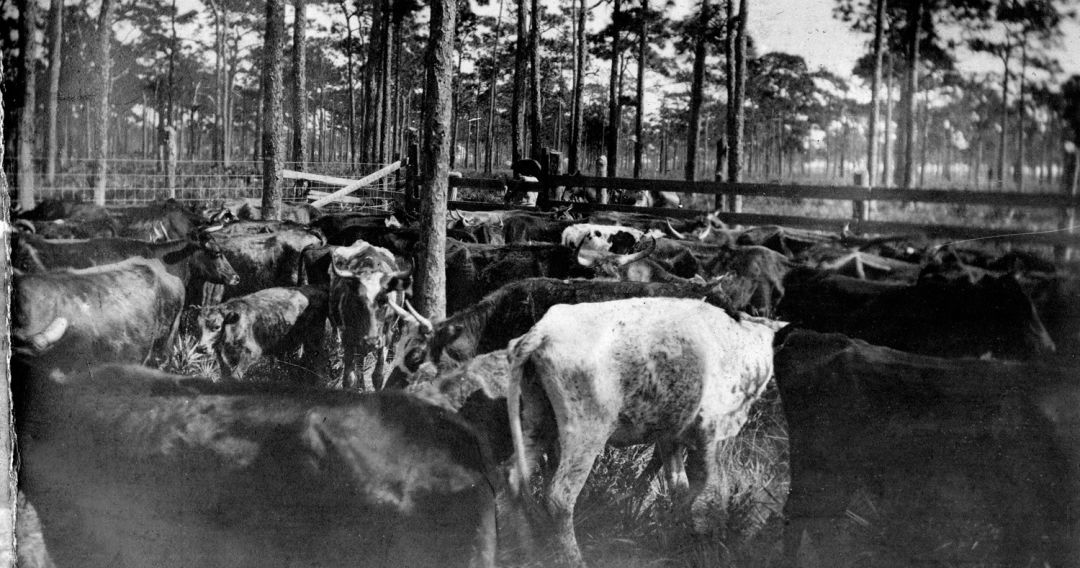The Making of Myakka River State Park

Cattle grazed the myakka prairies in the early 20th century.
What is the meaning of “Myakka?” Depends on who you ask.
According to the Florida State Parks website, the exact translation of the word is unknown. But a story in the publication Florida Currents claims the word derives from “miarca,” which means “big water” in the language of the Seminole Indians. (It was allegedly a Seminole who told a land surveyor in the 1850s that the name of the river was Myakka, although it shows up as the Asternal River on English maps prior to 1850.)
Whatever the origins of the river’s name, the dry prairie surrounding it—well stocked with grasses, palmetto and other low shrubs—provided forage for cattle for decades, both prior to the acquisition of thousands of acres by Mrs. Bertha Palmer starting in 1910 and after, as this savvy businesswoman developed her Meadow Sweet Pastures. Palmer passed away in 1918.
Meanwhile, forward-thinking Sarasota resident (and first mayor) A.B. Edwards had already been working on the idea of setting aside a natural area for preservation in the late teens and early 1920s. In 1934, during the Great Depression, the state of Florida had foreclosed on more than 6,000 acres in the Myakka lower lake region. Seeing an opportunity, Edwards persuaded the trustees of the Internal Improvement Fund (IFF) to purchase more than 17,000 acres from the A.C. Honore Palmer Estate, and shortly after, Bertha’s sons, Honore and Potter, donated more than 1,900 acres to the state in her memory.
Now, what to do with all that wild landscape? In a fortuitous bit of timing, the Civilian Conservation Corps (CCC), one of many federal relief agencies established during the Depression as part of the New Deal program, was brought in to build roads, bridges and cabins, along with digging drainage ditches and cutting trees and underbrush, in order to make the area available for visitors. Our region got the infrastructure for a huge state park, and the CCC crews—otherwise unemployed young men—found themselves with work, lodging, regular meals, medical exams and even after-hours schooling. (There was also a recreation hall with billiards, a piano and a canteen for them, to say nothing of the fishing and swimming close at hand.)
The Myakka River State Park was officially dedicated on Feb. 18, 1941, and opened to the public in June 1942. Since then thousands upon thousands of visitors have enjoyed the unspoiled nature of the park, thanks to the foresight of some, the generosity of others, and the hard labor of hundreds more.



